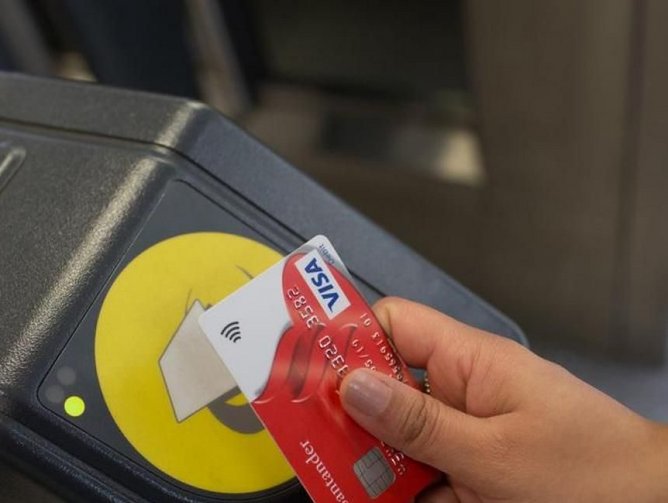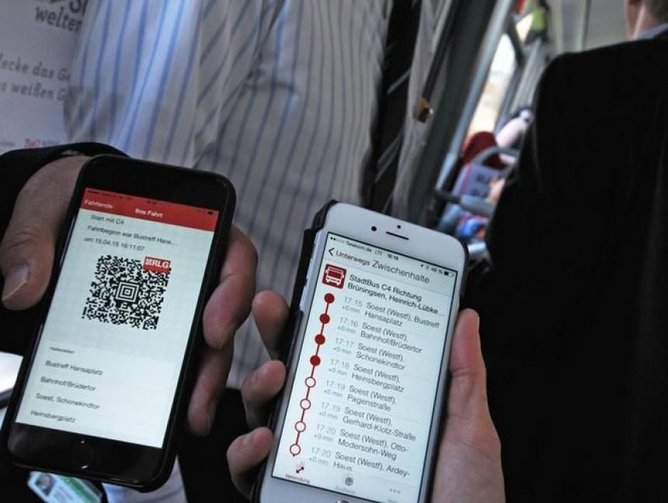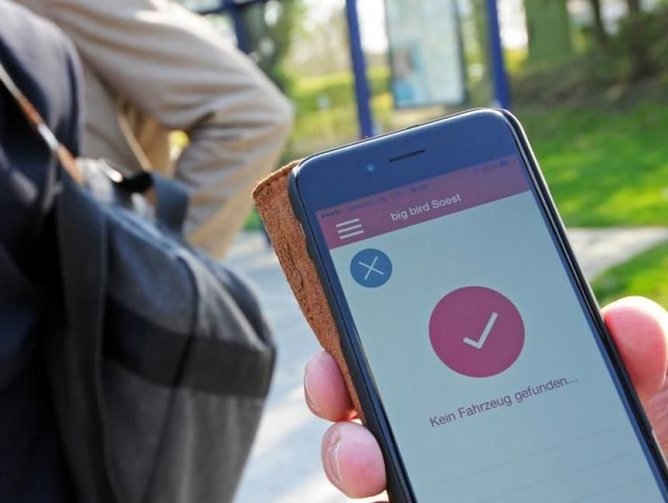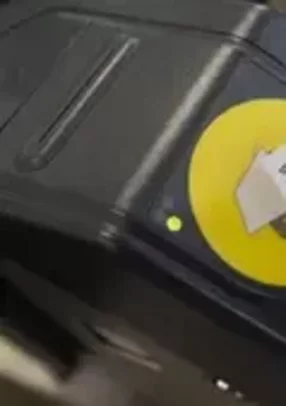Cubic Transportation Systems and NextCity: the future of transportation
One account, one app and one payment. This is Cubic Transportation Systems’ (CTS) ultimate vision for a user’s journey from doorstop to destination – a fully integrated, smart system that unifies all forms of transportation onto a single platform.
For several decades CTS has designed, delivered and operated payment, information and management systems for transportation networks. Each year 24 billion transportation fares are processed through its technology, while every day 38 million people travel via the worldwide transportation operators with which the company works.
With a particularly strong presence across the United States, CTS has delivered services such as fare collection and real-time information to the likes of Los Angeles, Chicago, Washington, D.C., Atlanta, Miami and San Diego, home to Cubic HQ. The Asia Pacific (APAC) region is seeing increased activity, especially in Australia and Singapore, while Europe is another territory targeted for expansion, building on successes seen in the UK.
“Our goal is simple,” says Tom Walker, CTS’ SVP and Managing Director of CTS APAC. “It is to be the leading transportation payments and information systems and services provider for major customers in this region and our other strategic markets around the globe.”
In order to get there the company is leveraging the power of what is arguably the most valuable commodity in the world today – data. “We are about using technology to connect transportation systems and manage traffic and transportation flow in a more effective way, harnessing the power of information and connecting data in partnership with our customers – the transportation authorities who own their customers’ information,” adds Boris Karsch, VP of Strategy. “This focus on data and using it to make better decisions around transportation strategy is a key element of how our technology helps transportation operators and provides better service to their customers.
“For example, our customers are exploring how, with permission from passengers, the trip data can be used to provide a more personalized user experience, including alerts about service interruptions on their usual travel routes.”
NextCity
Cubic Transportation Systems’ vision is packaged into what it calls NextCity, the panacea for how transportation payment and information can be managed. Founded on three core principles, NextCity focuses on the delivery of an integrated customer experience, one account for all travel modes, and integrated operations and analytics.
“Our strategy is to build around this vision, which came into play around five years ago,” explains Karsch. “The implication of mobile is what has really driven this concept and the heart of NextCity is making better use of information that is collected from these various devices, whether it be traffic sensors, video cameras, or fare collection and mobile devices. This is designed to give authorities and transportation operators information on traffic and transportation flows and where and when pinch points are on any given day.
“We need to turn this back into data that is usable for passengers, too. For example, in many cities we take location data from buses and use it to predict when it will arrive at the stop where you are waiting. Knowing exactly when your bus will arrive can make a big difference to your day, and if we can make public transportation systems more user friendly, the number of individual car journeys will decline and congestion will reduce as a result.”
Vital to executing this vision will be the continuing support not only of transportation providers and governments but also technology vendors. This has involved close collaboration with companies such as payments giant Mastercard. Microsoft is another key partner, and the two parties have combined transportation technology with cloud-based delivery models to handle growing data volumes. Through the Microsoft CityNext initiative, Microsoft and CTS will help cities do ‘new with less,’ by combining the power of technology with innovative solutions to connect governments, businesses and citizens with services that increase efficiencies, reduce costs, foster a more sustainable environment and cultivate thriving communities.
In practice
Component parts of the NextCity vision are already being deployed in cities around the world. In Europe, the London system has been a flagship model for other cities to aspire to. Cubic has built on the success of its Oyster card by adding contactless bankcard payments across the entire transportation system including tube and overground rail fare gates all around the capital, as well as buses, trams, light rail and river boats, a move that has been received extremely positively.
In Germany, a Check In/Be Out (CiBo) pilot has been taking place in the North Rhine Westphalian city of Soest. Users’ phones will automatically tell the system when they have boarded and left a bus or train, charging their account accordingly.
“Passengers have to tap in but they do not tap out. This is the fundamental principle of smartphone-based ‘Check In/Be Out.’ There is added certainty for end users and a smoother movement of people on and off transportation,” Karsch adds.
Cubic has partnered with Duisburger Verkehrsgesellschaft AG (DVG) and Kompetenzcenter Elektronisches Fahrgeldmanagement North Rhine-Westphalia (KCEFM), the consulting center for electronic fare management in the region, to organize the next project in order to investigate the behavior of such a system in underground stations and vehicles.
Closer to home, the New York MTA has been a long-standing customer. The city’s MetroCard system has been in operation since 2003, and Cubic has continued to support the MTA through various projects including the introduction of the Select Bus Service, the Second Avenue Subway Project, the Number 7 line extension and the Barclays Center transit hub among many others. Recently, the company secured a $40.3 million contract to continue support until 2022.
Karsch adds: “The MTA is in the middle of a procurement to upgrade their current system, a project which, of course, we are hoping to win. In the meantime, we are supporting the system already in place. This is a great example of the sort of long-term relationships we aspire to build with cities across the world. Chicago is another example, for which we have upgraded three times over several decades. And there is a wave of cities rolling out mobile customer experience programs where we hope we can make an impact.”
APAC advances
Many of these cities can be found in the APAC region, where Tom Walker and his CTS team operate. The company has an especially strong presence in Australia, with 520 staff located in Sydney, Melbourne and Brisbane, while Singapore also houses a small team.
At the top of Walker’s project list is the development of a National Connected Multimodal Transport (NCMT) Test Bed in partnership with the University of Melbourne. It will be the world’s first urban laboratory capable of large-scale testing and implementation of emerging technologies in complex urban environments. Using sensors over a 4.5 square-kilometer area, the testing will explore ways to relieve pressures created by population growth and traffic increases by using data from traffic, public transportation, infrastructure and parking. The NCMT Test Bed will also focus on multimodal transportation systems consisting of connected vehicles, roadways, freight, city logistics, public transportation, smart stations, pedestrians and cyclists.
Walker explains: “The information from all of the sources will be pulled into the platform and analyzed. How are people moving through the city? What factors impact their decisions? These are key questions that need answering in order to create a truly connected multi-modal transportation system.
“This will help build a complete picture of mobility over time in the area and will give us insight on how people’s behavior changes when incidents happen. It is not trying to be too definitive necessarily about what data; the end goal is to get the total view of the area. There is a huge amount of data out there already, but the problem is trying to analyze in a way that becomes useful information and can lead to positive, effective decisions.”
Adding further intrigue to the project is the major development of a new metro line through the city, and data from how this is used and responded to will provide extra and crucial insight into urban mobility. “This is a fantastic opportunity for us to mature our product, which we believe will be in great demand as cities look to optimize their transportation networks,” Walker adds.
In Sydney this year, CTS will be participating in a trial of London-style open payment, or contactless ticketing. The trial will allow Sydney commuters to tap their contactless bankcard directly on Opal readers at fare gates to pay for travel. Walker says Cubic is very proud to be part of the trial, which will be the first time open payment technology has been used in Australia and the southern hemisphere.
Singapore
Among the ‘smartest’ cities in the world along with the likes of Dubai, Singapore is continually investing in its transportation infrastructure.
“We have a new contract to provide automated fare collection equipment for Singapore’s Thomson-East Coast Line, an important extension of the city’s rail system,” Walker says. “Delivery of the Singapore system should take place in 2019 in parallel with the construction timetable for the metro line.
Singapore no doubt will emerge to become one of CTS’s most valuable APAC cities, a willing testing ground for innovation. “We see Singapore as a key market for us,” Walker adds. “It is a forward-thinking city that is eager to try out new ideas to improve the customer experience.”
Joined up journeys
Integration of the first and last mile of a customer’s journey is what will allow CTS to truly implement its NextCity vision. Ride and bike-sharing schemes, and perhaps further down the line autonomous cars, will therefore be crucial by getting on board to make this happen.
“Companies like Uber are really starting to take off,” says Karsch. “Cities are therefore asking us how to integrate these types of services into the overall fare collection system for transportation, and the role they can play in solving the first mile-last mile problem. Over the next five to 10 years these services will be integrated into the whole system.”
“Ride-sharing operators are very interested in the first and last miles of a customer’s journey,” adds Walker. “They will be adding to the choice when passengers get off the train or bus as to how to get home. I believe they will be very keen to be part of the one payment solution from doorstep to destination.”
Customers are also expressing keen interest in managing just one account for an entire journey within a city, not least in Australia.
“This will be a key component of a city truly being able to move people through seamlessly and effortlessly,” says Walker. “It will give the complete end-to-end, doorstep-to-destination set of data needed to understand how people move.”
Indeed, projects such as the NCMT will be the basis of a personal communication between the city’s transportation network and the end user. The app or account will be able to tell a customer if their usual way into work or journey is disrupted on any given day, offering alternatives, which Walker says could even include incentives such as discount vouchers.
By integrating the first and last mile elements, CTS expects to make significant strides towards realization of NextCity, which is CTS’ overriding strategic goal. He concludes: “We would like to launch NextCity or something very close to this total end-to-end transportation network in the next five years. There are cities out there ready to take it on and make the next step from automated ticketing.”





